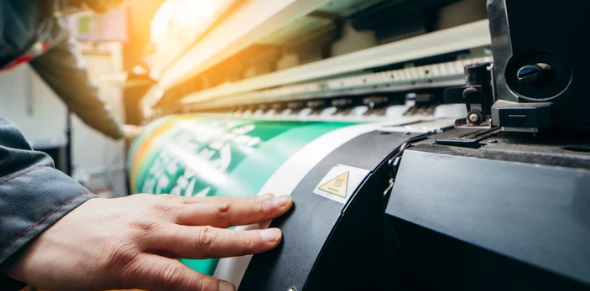Printers are incredibly useful, but when hardware issues appear, they can interrupt your work, waste supplies, and lead to costly repairs. The good news is that most printer hardware problems are preventable when you understand what causes them and how to avoid them. This guide breaks down the most common hardware issues, why they happen, and what you can do to keep your printer running smoothly.
1. Paper Jams: What Causes Them and How to Prevent Them
Paper jams are the most frequent printer problems—and also one of the easiest to avoid.
Common Causes
- Misaligned paper
- Overfilled paper tray
- Damaged or curled paper
- Dirty or worn-out feed rollers
- Debris stuck inside the machine
How to Avoid Paper Jams
- Use clean, dry, high-quality paper
- Fan and align sheets before loading
- Don’t overstuff the paper tray
- Clean rollers regularly
- Keep your printer in a dust-free environment
A little maintenance goes a long way in preventing jams altogether.
2. Printer Not Feeding Paper Properly
When your printer fails to pick up paper, the issue often comes down to roller problems.
Why It Happens
- Dust or dirt on rollers
- Worn-out roller grip
- Incorrect paper thickness
How to Prevent It
- Clean rollers monthly with a lint-free cloth
- Replace rollers when the rubber becomes smooth
- Use printer-recommended paper types
Proper roller care ensures smooth printing every time.
3. Poor Print Quality (Streaks, Fading, or Spots)
Print quality issues usually stem from hardware components like the printhead, drum, or toner system.
What Causes Poor Print Quality
- Clogged printheads
- Empty or low-quality ink/toner
- Damaged drum units
- Dust inside the printer
How to Prevent Quality Problems
- Clean printheads regularly
- Use genuine or high-quality cartridges
- Keep the inside of the printer dust-free
- Replace worn drums when print quality declines
Regular cleaning makes a significant difference in print output.
4. Overheating Hardware Components
Laser printers and high-volume inkjets can overheat during heavy use.
Why Printers Overheat
- Long, continuous print jobs
- Dust blocking air vents
- Faulty internal fans
- Poor ventilation around the printer
How to Prevent Overheating
- Give your printer cooling breaks during large jobs
- Keep vents clean and unblocked
- Place your printer in a cool, open area
- Avoid storing it near heat sources
Preventing overheating protects sensitive internal components like the fuser and motor.
5. Jammed or Stuck Cartridges
Cartridge problems can stop your printer from working altogether.
Common Causes
- Improper installation
- Low-quality or incompatible cartridges
- Dried ink (for inkjets)
- Broken locking mechanisms
How to Avoid Cartridge Issues
- Install cartridges slowly and securely
- Always remove the protective tape before use
- Use compatible, high-quality brands
- Print regularly to prevent ink from drying
Simple handling habits can prevent many cartridge failures.
6. Broken or Worn-Out Rollers
Rollers wear down over time, losing their grip and causing misfeeds or jams.
Causes of Roller Wear
- Heavy usage
- Low-quality paper
- Dust buildup
- Aging rubber materials
Prevention Tips
- Clean rollers monthly
- Replace rollers every 1–2 years depending on usage
- Store the printer in a clean environment
Healthy rollers mean smooth and reliable paper feeding.
7. Printer Not Powering On
Power-related hardware failures can be alarming but are often simple to diagnose.
Why It Happens
- Faulty power cable
- Damaged power button
- Electrical surge
- Internal hardware failure
How to Prevent Power Issues
- Use a surge protector
- Avoid plugging the printer into loose or unstable sockets
- Keep cords away from sharp bends or heavy objects
- Turn the printer off only using the power button
Protecting your printer from electrical issues helps preserve its lifespan.
8. Internal Hardware Failure
Sometimes internal components like the fuser, motherboard, or sensors may fail.
Common Causes
- Aging parts
- Overheating
- Manufacturing defects
- Heavy usage without maintenance
How to Avoid Major Hardware Failures
- Keep your printer clean
- Schedule periodic maintenance
- Use the printer within its recommended duty cycle
- Replace worn-out parts early
Preventive care significantly reduces the risk of internal breakdowns.
9. Connectivity Hardware Problems
When your printer can’t connect to Wi-Fi or your computer, hardware may be to blame.
Causes
- Faulty network modules
- Damaged USB ports
- Wiring issues
Prevention Tips
- Avoid yanking USB cables
- Keep the printer away from physical impact
- Update firmware regularly
- Avoid overheating, which affects internal Wi-Fi modules
Proper handling keeps connectivity components in good condition.
How to Prevent Printer Hardware Failures Altogether
Following these simple maintenance habits can dramatically extend your printer’s lifespan:
✔ Clean the printer monthly
✔ Use high-quality paper and cartridges
✔ Keep the printer in a dust-free, cool environment
✔ Avoid heavy continuous printing
✔ Keep firmware and drivers updated
✔ Replace worn components early
✔ Turn off the printer properly after use
These habits reduce stress on your printer and prevent most hardware issues from developing.
Final Thoughts
Printer hardware problems can be frustrating, but most of them are preventable with simple maintenance and smart usage habits. By understanding what causes these issues—and taking steps to avoid them—you can save money, improve print quality, and ensure your printer lasts for years. With proper care, your printer will perform reliably whenever you need it.
Also Read :
